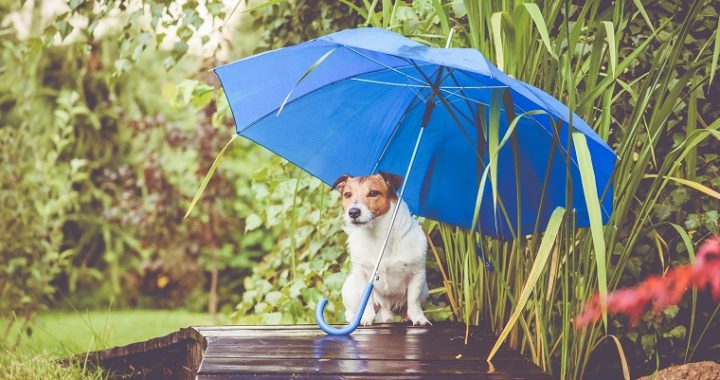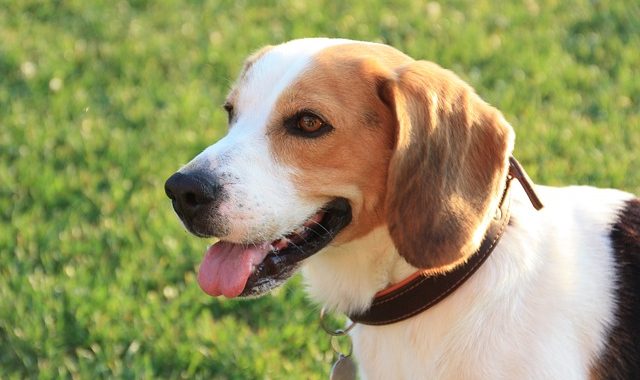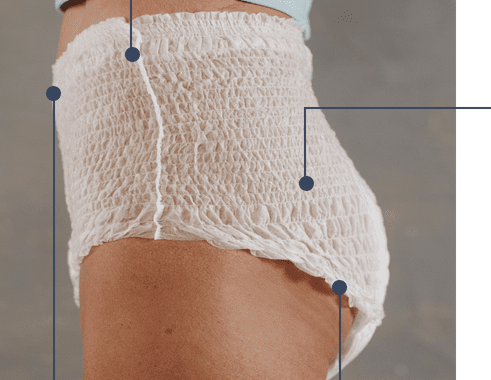Gold Souls, Gray Faces: 8 Tips For Walking Senior Dogs

Happy Dog
Gold Souls, Gray Faces: 8 Tips For Walking Senior Dogs
Our senior little guys may not move as quickly as they used to, yet they actually advantage from normal exercise and strolls. Keep more seasoned canines moving, regardless of whether they don’t have the very actual capacities and requirements that they did when they were more youthful.
Weight acquire adds to weight on the joints and bones, which is particularly destructive to seniors who experience the ill effects of joint pain. The remaining dynamic can forestall weight and increment the progression of blood and oxygen to the joints and muscles, which might diminish the impacts of joint inflammation.
Outside strolls likewise give canines a chance for mental incitement, and that is significant for battling the indications of dementia in maturing canines. Even though customary strolls are incredible for canines, all things considered, there are some huge contrasts with regards to strolling a senior canine.
Before you rope up and head out with your dark confronted buddy, ensure you check with your veterinarian to decide whether your canine is solid enough for moderate exercise.
Here are a couple of tips for strolling senior canines.
1. Get ready For The Weather
You likely as of now play it safe with regards to the climate, regardless of how old your canine is, yet it turns out to be much more significant when your canine gets more established.
Tempests and pressing factor frameworks can influence the joints, as an outrageous cold and warmth. Indications of ailments can deteriorate in abnormally dry or clammy air.
Ensure you’re ready for the climate, and deal with your canine’s necessities. Investigate the gauge to prepare. On the off chance that the climate is chilly, dress them in suitable stuff. They might require additional glow now that they’re more established. In case it’s hot, adhere to the shade and take more breaks.
If the climate is a lot for your senior to deal with, consider doing some indoor activities, all things being equal, and breaking point the outside time. Try not to accept the awful climate as a pardon to skip practice through and through, however.
2. More limited, More Frequent Walks
Youthful canines may partake in a decent, long stroll to consume off energy, yet seniors don’t really should be exhausted by actual work.
The place of activity for your senior is to get the blood going, the joints and muscles working, and the cerebrum thinking. Strolls ought to be sufficiently short to try not to put a lot of weight on the body.
Going for more limited, more continuous strolls rather than long strolls will permit your senior to rest and recuperate, and it will likely assistance on the off chance that they need to go potty all the more as often as possible in their advanced age.
The length of the walk might rely upon your canine’s variety, size, and individual clinical necessities, so counsel your veterinarian to concoct a decent walk plan for your canine.
3. Focus On What Time It Is
Keeping an ordinary walk plan is significant for maturing canines, as they are less restless when their routine is more unsurprising. Take a stab at strolling your canine at around a similar time each day.
You can add more strolls depending on the situation, yet keeping a timetable can lessen the manifestations of dementia and forestall restless practices.
Check the time because your senior might think that it’s simpler to stroll during specific occasions of the day. The temperature is generally hotter during the center of the day when the sun is high and cooler toward the beginning of the day or evening when the sun goes down.
Contingent upon where you reside, you might need to time your strolls for when temperatures are generally fitting for your canine’s requirements.
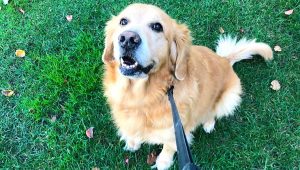
4. Take Breaks And Bring Water
More seasoned puppies particularly need breaks during strolls, and you ought to have some water convenient for when they get parched. Numerous canines don’t have a clue about their own constraints, and surprisingly in advanced age, their fervor for going on a walk might make them disregard the way that they need time to unwind and recuperate.
Take a few breaks to pause and sniff for some time before proceeding, and offer your senior some water, regardless of whether they don’t give outward indications of being parched.
Halting to sniff can likewise be an incredible mental exercise. If your canine has a most loved spot, make it a highlight stop there briefly before you proceed.
5. Stroll On Easy Surfaces
It tends to be difficult to come by a decent spot for canines to walk that will not put weight on their bodies or make a lot of an effect on their joints and bones, particularly if you live in the city where there is a ton of cement and asphalt.
It’s ideal to adhere to short grass or earth however much as could reasonably be expected to relax the effect of steps if possible.
Long grass or sand might seem like great decisions since they make for gentler advances, however, it likewise goes for more exertion to stroll through them, so your senior might get worn out rapidly.
At times cleared surfaces are the solitary alternative — for the most part in winter when the gentler ground is canvassed in snow or when the ground is excessively wet and sloppy to stroll on. In case that is the situation, you might need to restrict open-air strolls and, all things considered, practice inside where there’s the gentler deck.
You can discover muscular shoes or booties for senior canines, yet check surveys before you choose to utilize them.
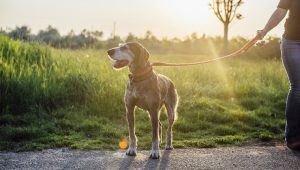
6. Ensure They Eat Right And Get Medical Attention
There are a lot of enhancements and food sources that can assist with lessening irritation and the impacts of joint pain on canines, and there are a few dietary changes you can make to battle manifestations of other ailments, like hypersensitivities, that can be particularly distressing to seniors.
Converse with your veterinarian or nutritionist about making a fitting eating routine for your senior that will assist with forestalling weight acquire that can demolish joint pain, and ensure your canine is getting the enhancements they need to avert different conditions that influence more established canines.
Additionally, converse with your veterinarian about any meds your canine ought to be taking to address any side effects that keep them from working out. If your canine experiences difficulty moving, check whether hydrotherapy or needle therapy may assist with getting them back on their paws.
These means will ensure that your strolls are useful to your canine, instead of causing more mischief than anything.
7. Think about Special Needs
Some senior canines might require help while getting around. They might require wheelchairs or different gadgets to assist with versatility, or they might require extraordinary boots to forestall injury on the off chance that they drag their paws.
On the off chance that your canine experiences a great deal of difficulty in any event, strolling brief distances, everything will work out just fine to talk about how to keep them moving with your vet. Regardless of whether your canine can’t walk exceptionally far, they might partake in the natural air and new scents that accompany being outside, which will assist with keeping their cerebrum working and give mental incitement.
There’s no damage in bringing along a cart or buggy so your canine can in any case partake in the outside without the actual pressure. A few groups might give you interesting looks or judge you for strolling your canine thusly, however, don’t give any consideration to them. You’re making the wisest decision for your closest companion, and that is the only thing that is in any way important.
Allow your canine to stroll however long they’re ready to do as such serenely, yet don’t deny them the joy of being outside in case that is something that they appreciate.
8. Pay attention To Your Dog
Perhaps the main thing you can do is to pay attention to what your canine is advising you. Even though they can’t really talk, they can in any case say a great deal with their non-verbal communication, and you’ll need to focus.
If they give indications of inconvenience, like limping, easing back down, or declining to move, it implies you need to stop, rest, refocus, and address their requirements. On the off chance that they give indications of requiring a break, like gasping, slobbering, or whimpering, you should pull over and offer them some water and an opportunity to slow down and rest.
You might have to take them home immediately in case they can’t proceed with the walk. Know your canine. If they give indications of stress, it’s an ideal opportunity to stop.
![[b]Purebred tricolor beagle puppy following its nose on a muddy beach.[/b]
[i]beagle puppy[/i]
[url=http://www.istockphoto.com/stock-photo-26232253-i-hope-nobody-sees-me-peeing.php][img]http://i.istockimg.com/file_thumbview_approve.php?size=2&id=26232253[/img][/url]
[url=http://www.istockphoto.com/stock-photo-26266436-i-found-some-shade-and-a-hat.php][img]http://i.istockimg.com/file_thumbview_approve.php?size=2&id=26266436[/img][/url]
[url=http://www.istockphoto.com/stock-photo-26200536-embarrassment.php][img]http://i.istockimg.com/file_thumbview_approve.php?size=2&id=26200536[/img][/url]
[i]more animals
freshwater birds:[/i]
[url=http://www.istockphoto.com/stock-photo-26364887-lazy-pelican.php][img]http://i.istockimg.com/file_thumbview_approve.php?size=1&id=26364887[/img][/url] [url=http://www.istockphoto.com/stock-photo-26202289-pelican-preening.php][img]http://i.istockimg.com/file_thumbview_approve.php?size=1&id=26202289[/img][/url]
[url=http://www.istockphoto.com/stock-photo-26379006-pelicans-resting.php][img]http://i.istockimg.com/file_thumbview_approve.php?size=1&id=26379006[/img][/url] [url=http://www.istockphoto.com/stock-photo-26187749-duck-in-a-hurry.php][img]http://i.istockimg.com/file_thumbview_approve.php?size=1&id=26187749[/img][/url]
[url=http://www.istockphoto.com/stock-photo-26505868-swan-in-the-lake.php][img]http://i.istockimg.com/file_thumbview_approve.php?size=1&id=26505868[/img][/url]](https://www.yourhellopet.com/wp-content/uploads/2021/07/dog-walk-stimulated-treasure-hunt-720x380.jpg)
